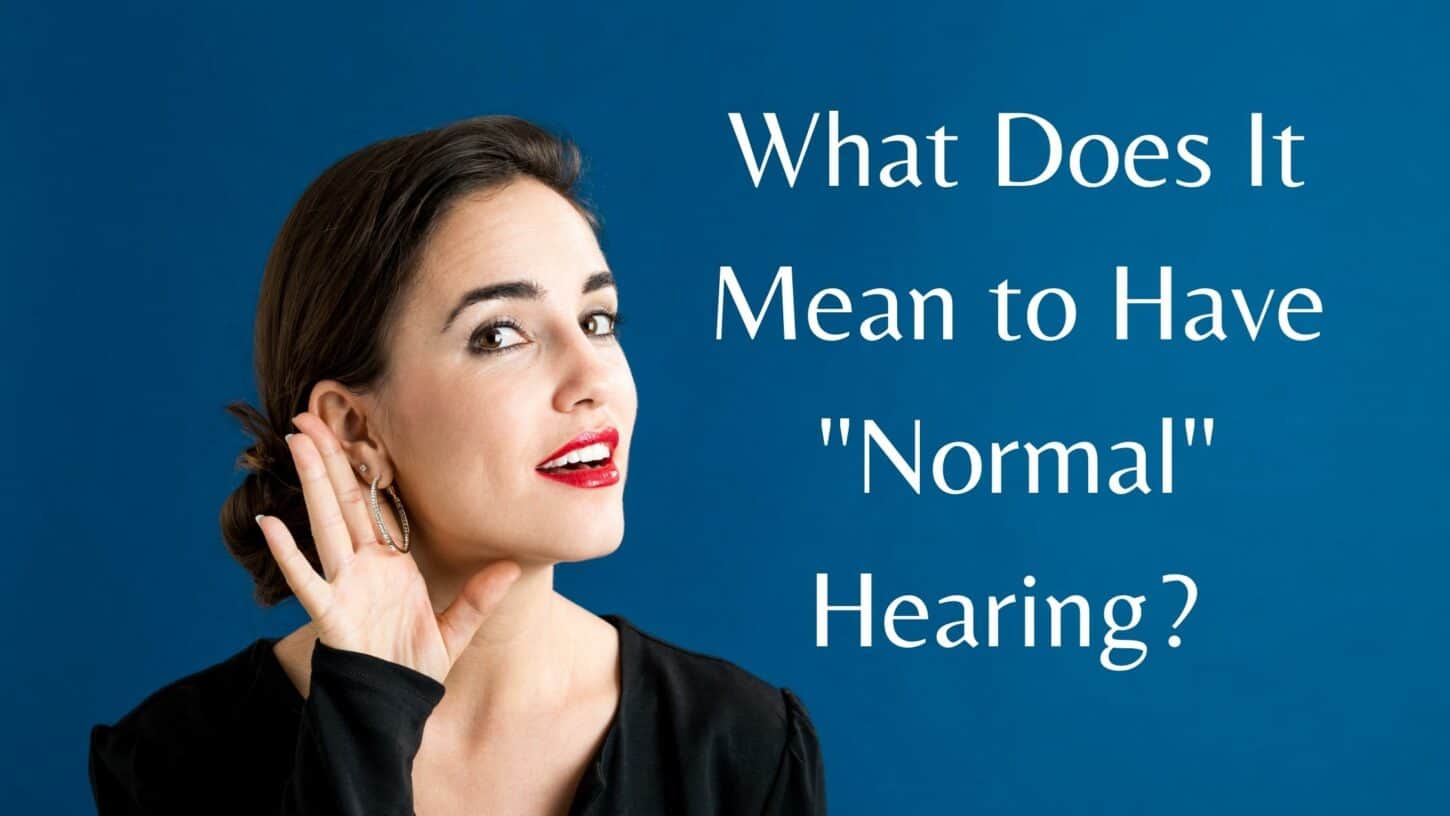Have you noticed changes in your hearing? Maybe you’re missing a few words in conversations, or you’ve been turning up the volume on the TV. If you recently realized that you have hearing loss, you’ve started thinking a lot more about hearing. You might be wondering what it means to have “normal hearing” and if there’s a way for you to get it back.
What is “Normal” Hearing?
The volume of sound is measured in decibels (dB). Every pitch or frequency has a sound that is barely detectable, and the quietest sound you can hear is your hearing threshold.
The softest sound that an average person can hear is 0dB. This sound is nearly silent, and some people can’t hear a sound at this volume. Since each person has slightly different hearing abilities, “normal” hearing is a range of decibel levels. Normal hearing is between 0 to 20dB. If your hearing threshold is anywhere in this range, you have normal hearing.
Can You Hear Sounds Below 0dB?
You might be surprised to learn that some people with “normal” hearing can also hear sounds below 0dB! That’s because 0 is the average softest sound someone with “normal” hearing will be able to detect. And to get an average of 0dB, some people have to hear sounds lower than 0, while others might only hear sounds at 5dB or 10dB. So a “normal” hearing range is actually from -10dB to 20dB.
Measuring Hearing
When you have a hearing test with our hearing health specialists, one of the tests you’ll do is a pure tone test. During this test, you’ll hear loud and soft tones in a number of pitches. You’ll focus carefully, and tell us when you can hear a sound, even if it’s very soft. Your results are displayed on a graph called an audiogram.
The audiogram shows the softest sound you can hear at each pitch. If you can hear sounds between 0 to 20dB at each pitch, you have normal hearing!
What is Hearing Loss?
When looking at your audiogram, you might see that your hearing threshold is above 20dB. You weren’t able to hear sounds that were softer than 20dB. This means you have hearing loss. The audiogram also shows you the degree of hearing loss you have:
- You have mild hearing loss if you can’t hear sounds between 20 to 40dB.
- You have moderate hearing loss if you can’t hear sounds between 41 to 55dB.
- You have moderately severe hearing loss if you can’t hear sounds between 56 to 70dB.
- You have severe hearing loss if you can’t hear sounds between 71 to 90dB.
- You have profound hearing loss if you can’t hear sounds over 91dB.
These ranges might seem small, so let’s put that into perspective. Sounds that are 20dB include a whisper, or leaves rustling in the wind. 40dB is the quietness inside a library, or the low hum of your urban neighborhood. A conversation is around 60dB, and a food blender or garbage disposal is 80dB. Sounds over 85dB can cause hearing loss, for example your power lawnmower, a jackhammer, sirens, or even louder noises.
Do You Have Hearing Loss?
Your hearing can change before you officially have hearing loss. For example, a few years ago you may have had a hearing threshold of 10dB, but now your hearing threshold is between 15 to 20dB. You still have “normal” hearing, but you can’t hear as many sounds as before. If your hearing threshold changes from 20dB to 35dB, you’ll hear far less sound than before, and you’ll have mild hearing loss. It’s normal that our hearing threshold changes with age, so it’s important to schedule regular hearing tests and monitor your hearing health.
Treating Hearing Loss
Has your hearing threshold changed from “normal” hearing to mild hearing loss? Even a mild hearing loss makes it hard to follow conversations and stay social. You’ll get annoyed by all the sounds you can’t hear, and argue with your family about the volume of the TV. You’re also more likely to feel lonely and isolated. Treating hearing loss with quality hearing aids will help you hear clearly, lowering your hearing threshold so you can catch all the sounds around you.


